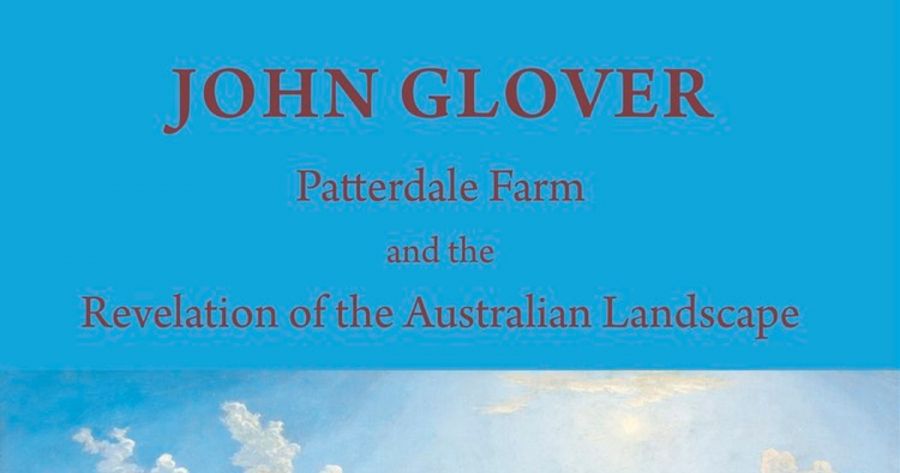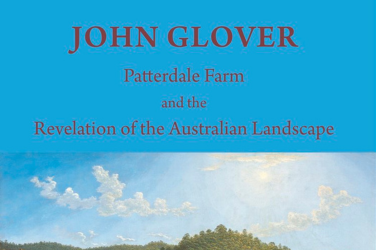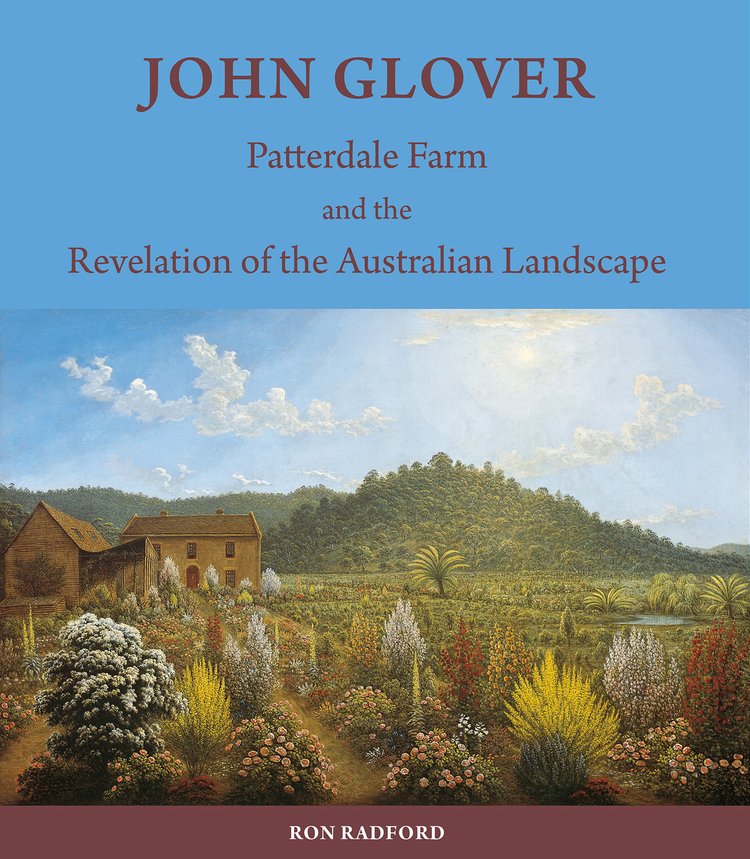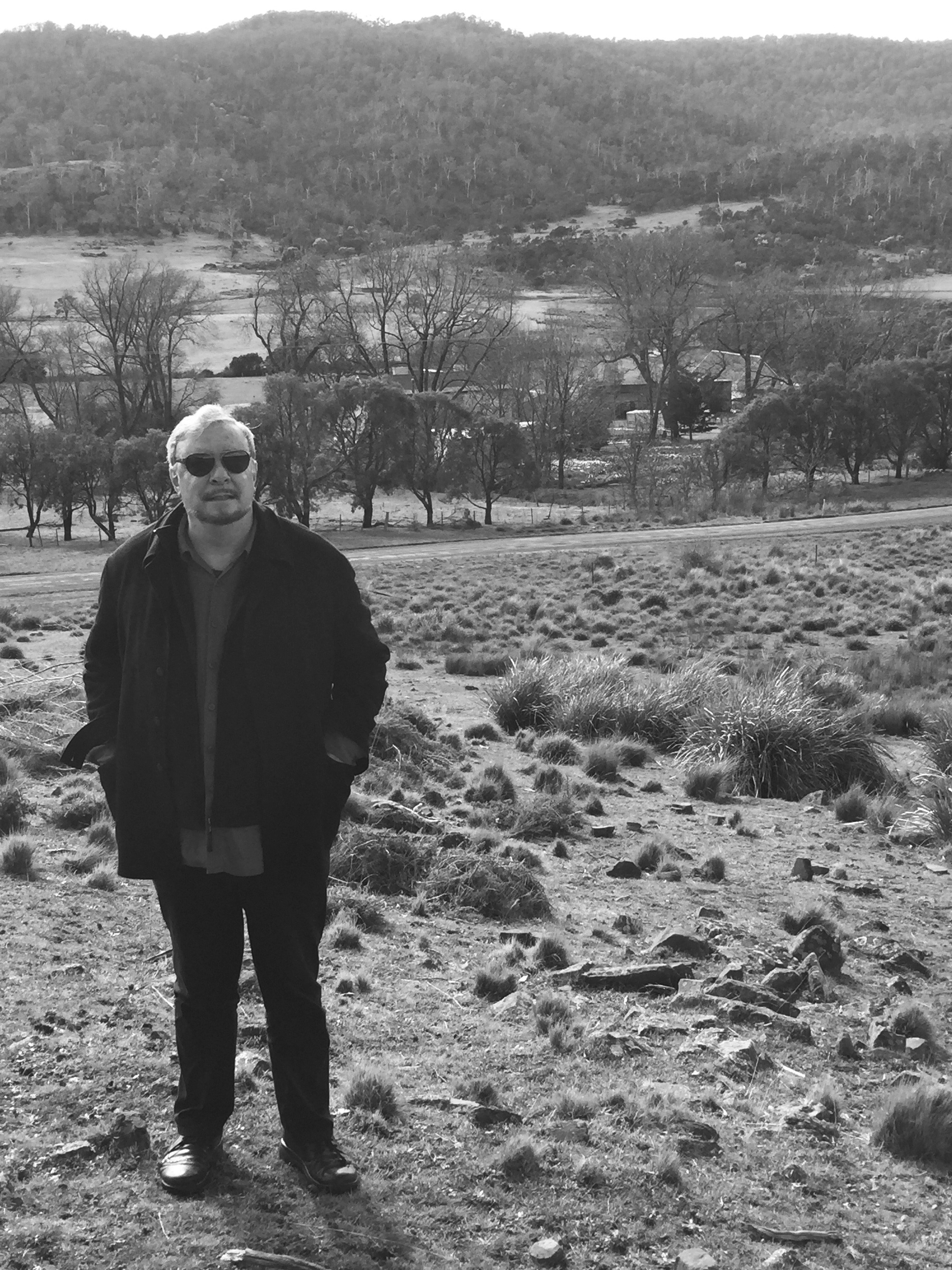
- Free Article: No
- Contents Category: Art
- Review Article: Yes
- Article Title: Glover Country
- Article Subtitle: A pioneering study of the artist
- Online Only: No
- Custom Highlight Text:
If you think you know about John Glover (1767–1849) and his achievements, then think again. Read this publication and you will discover fresh and compelling information about Glover, his life in Australia, and his house and garden.
- Featured Image (400px * 250px):

- Alt Tag (Featured Image): Anne Gray reviews 'John Glover: Patterdale Farm and the revelation of the Australian landscape' by Ron Radford
- Book 1 Title: John Glover
- Book 1 Subtitle: Patterdale Farm and the revelation of the Australian landscape
- Book 1 Biblio: Ovata Press, $49.95 pb, 216 pp
- Book 1 Cover Small (400 x 600):

- Book 1 Cover (800 x 1200):

The author of this publication is Ron Radford, a former director of the National Gallery of Australia and the Art Gallery of South Australia. His decades of experience in art museums included the study of the life and work of Glover, among many other subjects. Radford, who now lives in Tasmania, asks why Glover, already a successful nineteenth-century British artist, emigrated to convict Tasmania in 1831, aged sixty-four. Was it simply because three of his sons had arrived there as free settlers two years earlier and had obtained land grants? Was it because of his love of the adventure of travel and of rural life? (Radford quotes Glover, writing in 1830: ‘the expectation of finding a new beautiful world – new landscapes, new trees, new flowers, new Animals, Birds etc is delightful to me …’) How did Glover’s discovery of this ‘new beautiful world’ change his art so radically, as Radford suggests it did?
Radford addresses these questions, examines Glover’s paintings and his farming at Patterdale, and considers the recent restoration of Patterdale. Although this is not the focus of the book, Radford also provides an account of Glover’s English period to provide a background to the author’s more detailed discussion of Glover’s Australian work.
In his narration of the artist’s life, family, and career, Radford reveals how Glover painted his best works in Australia but sold only sixty of the two hundred works he produced during those eighteen years in Tasmania. Interestingly, in Glover’s final years he painted mostly English and European subjects, based on drawings in his sketchbooks.
Indeed, Radford supports his story with references to Glover’s sketchbooks and paintings. He observes how Glover brilliantly conveyed the qualities of Australian light and the subtle botanical forms of Australian trees and foliage. He suggests a redating of key paintings and in this way offers a new chronology for Glover’s works. Moreover, a good number of the works are illustrated for the first time in this publication. Radford also discusses in some detail Glover’s frames, noting that, like many of his contemporaries, Glover was discriminating in his choice of frames for his works. In this, the book is far more comprehensive than previous discussions of Glover and his works.
The author is also the first to provide a record of Glover’s patronage and the destination of his paintings. He reveals that the artist’s most significant Australian patrons were John Crooke and John Thompson, who each purchased four paintings. Radford writes that these and other works were acquired by merchants and professionals, with few obtained by Tasmanian pastoralists and farmers (Glover’s neighbours). Radford suggests that such men did not want pictures that included Aboriginal people, which would no doubt have reminded the pastoralists that the Indigenous people had been rounded up and removed from their land. In exploring Glover’s patrons, Radford notes that his most significant patron was Sir Thomas Phillips in London, who owned a phenomenal total of forty-six works by Glover, acquired over a period of forty-nine years, from 1820 to 1869.
Radford also examines how Glover’s 200-year-old Patterdale farmhouse and garden has been recreated, using a panorama by John Richardson Glover which details ‘Mr G’s Room’, Mrs Glover’s kitchen, and the orchard, well and creek beside the garden, as well as the measurements of Glover’s exhibition room, and rooms in the attic for convict workers. The farm has operated continuously since the 1830s, producing superfine merino wool. The landscape, with its white gums and kangaroo grass, was dubbed Glover Country by Tom Roberts. The farmhouse, however, had been left to ruin until the recent restoration.
The book is dedicated to the Ben Lomond Nations, ‘who for untold centuries hunted at … [the area] the colonists called Mills Plains’. Radford suggests that Glover saw Tasmania as a Garden of Eden from which the Aboriginal people were cast out by the British settlers. He suggests Glover was interested in depicting how happy they had been before the arrival of Europeans. Here it is worth noting that, although Glover had sympathy for the Tasmanian Aboriginal people who had lived on and near his property, it is unlikely that he would have met them. By that time, the majority had been rounded up and sent to Flinders Island.



Comments powered by CComment